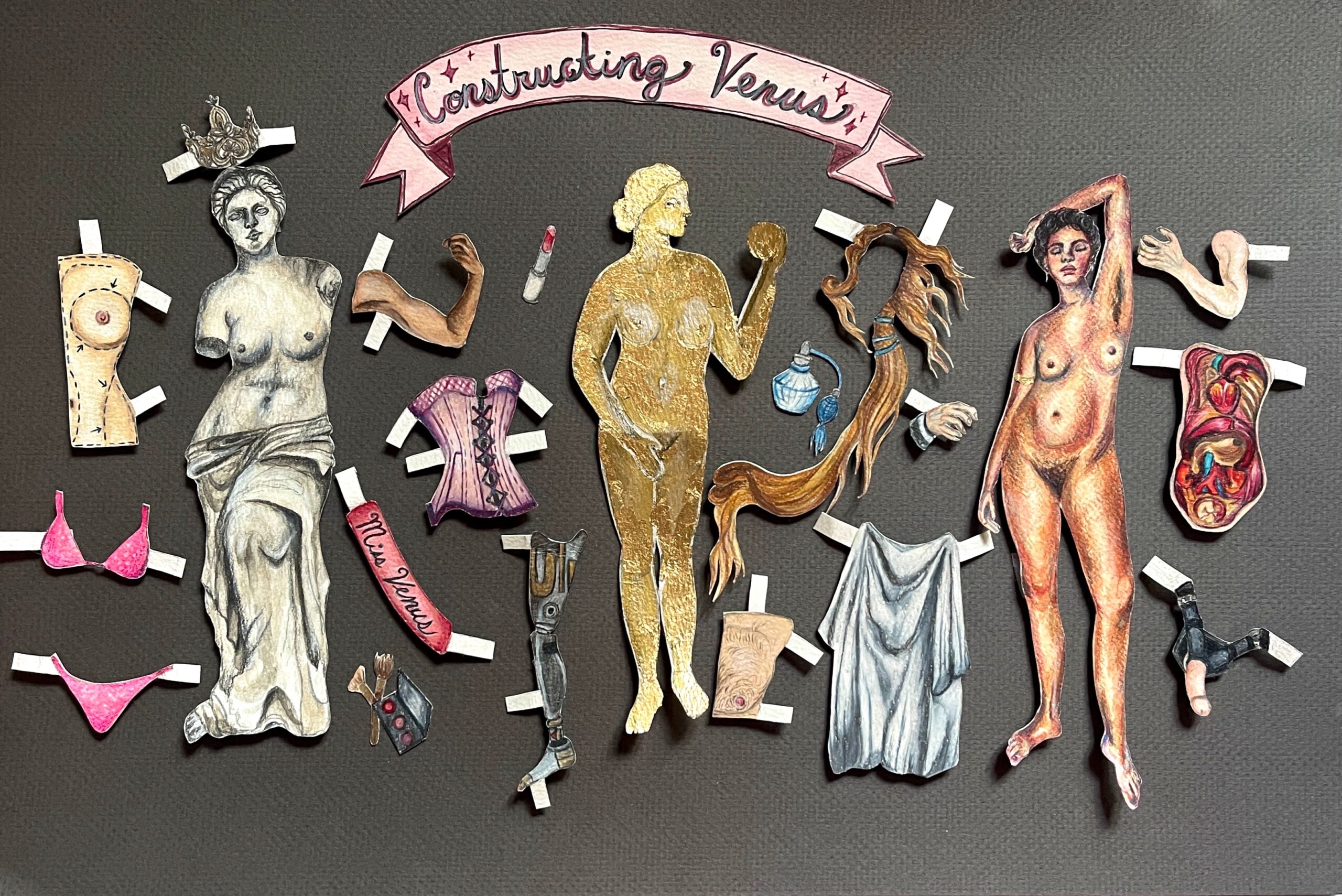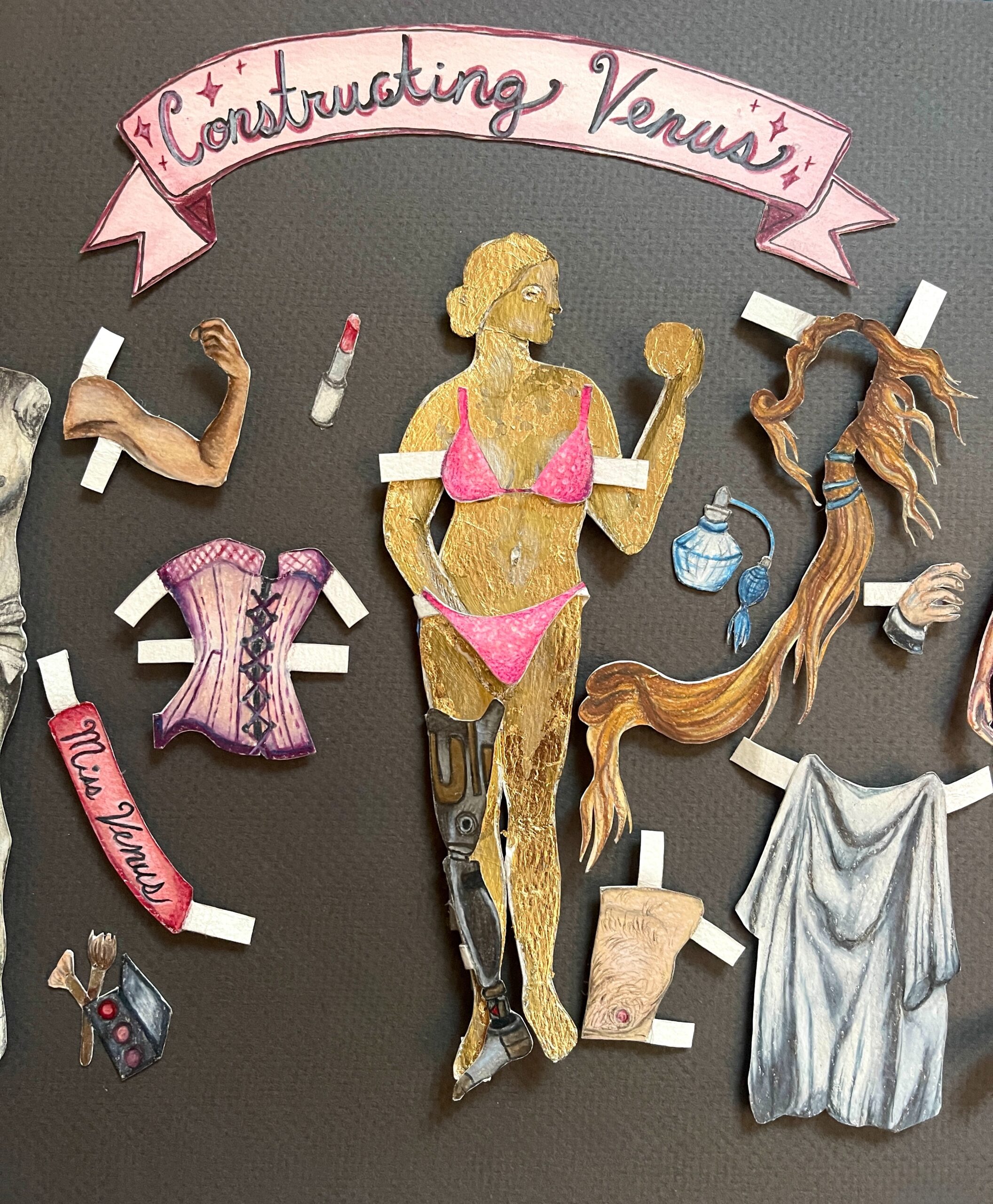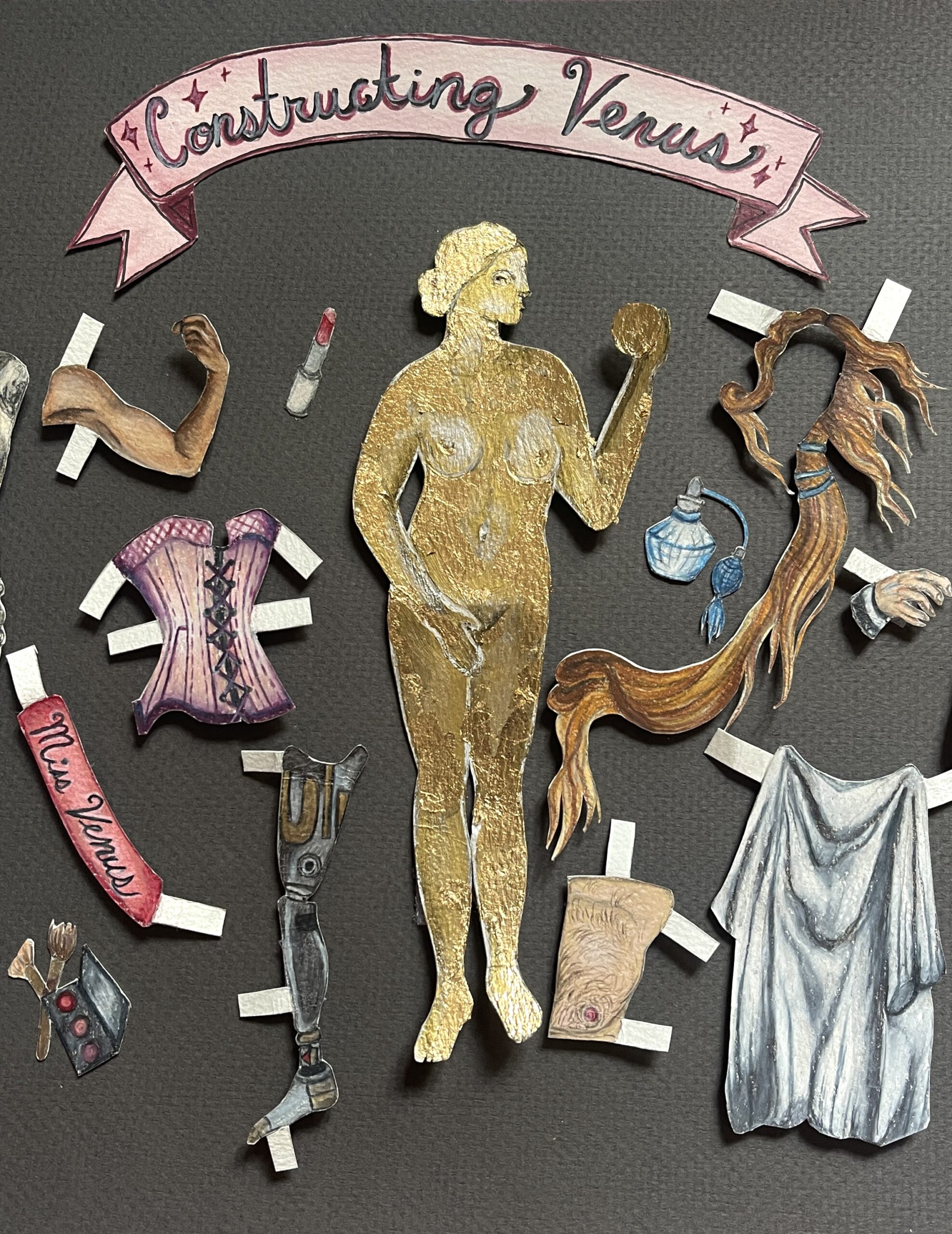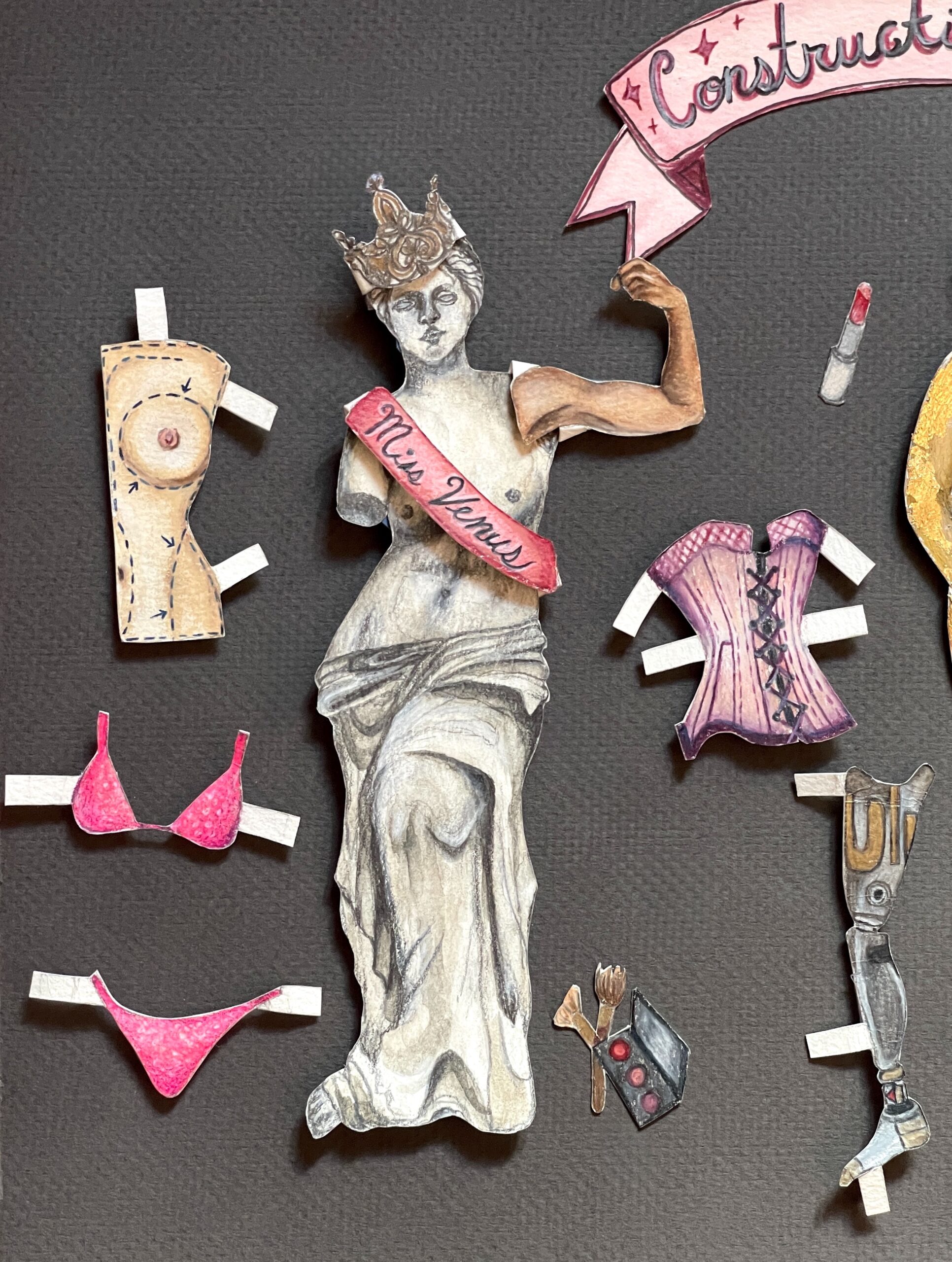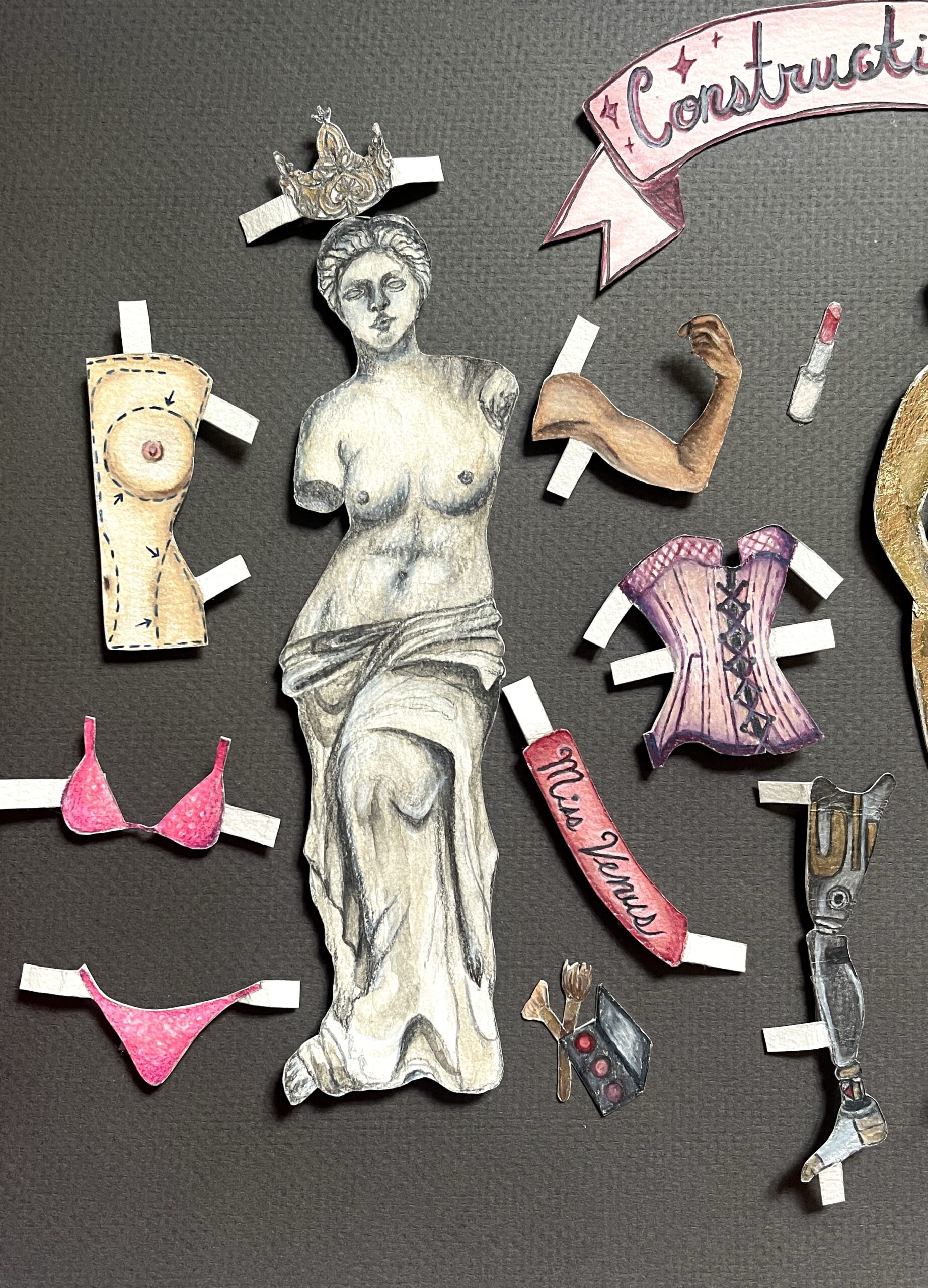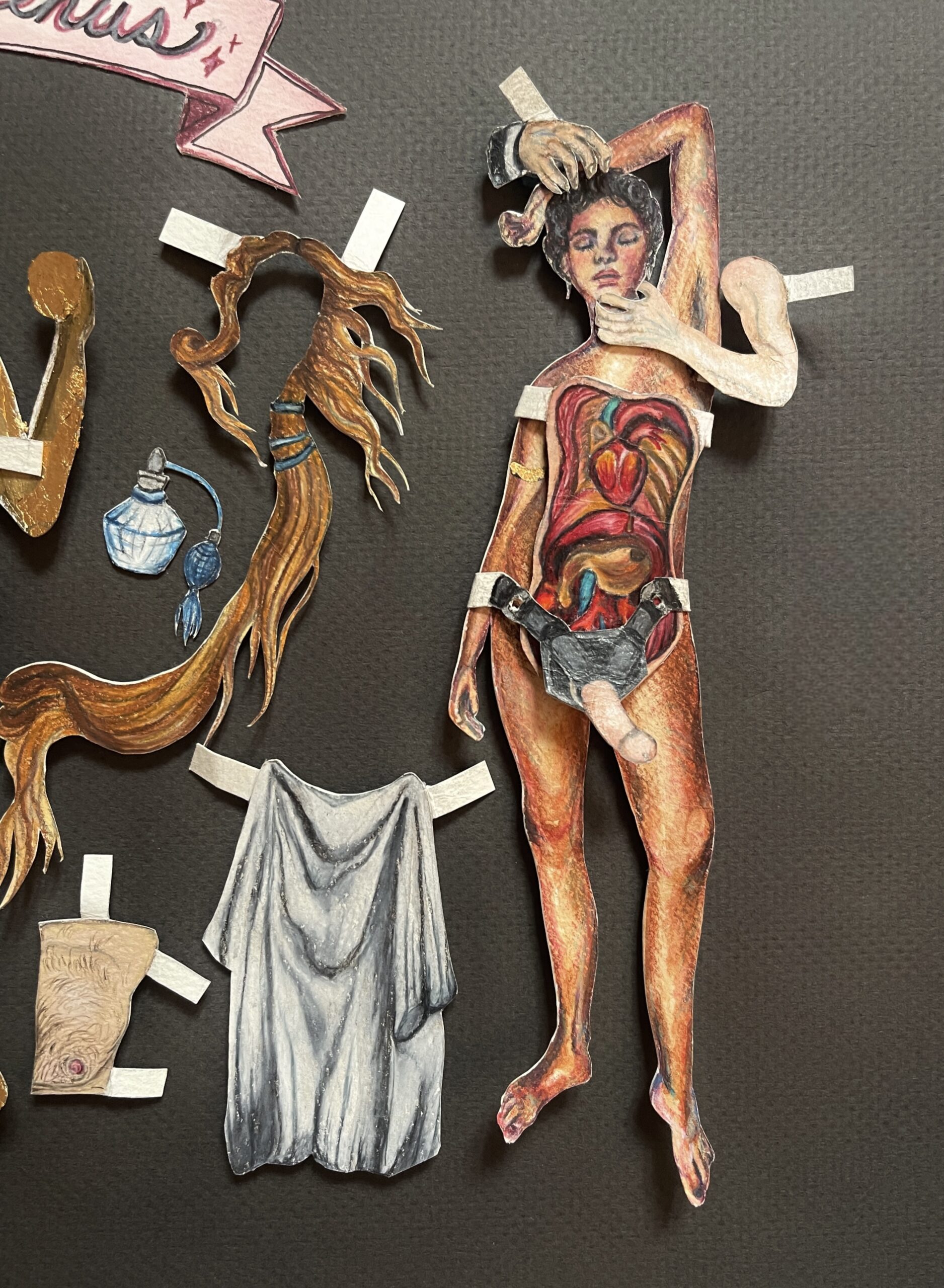It is impossible to identify an original form of Aphrodite, as even mythology contradicts itself.
Constructing Venus
It is impossible to identify an original form of Aphrodite, as even mythology contradicts itself. Contemporary understanding of the goddess is directly influenced by the bodily senses and lived experience of those who strive to define her. Thus the widespread impacts on female beauty standards associated with Aphrodite are born from individual narratives promoted as original representation. In my art work “Constructing Venus” I aim to define Venus through my own personal lens while simultaneously providing an opportunity for viewers to do the same. Such positionality demonstrates my own conclusion that representations of Venus are all constructed through the expression of individual lived experience. These representations often present themselves within the confines of similar imagery, such as the female nude positioned within the Pudica gesture, the pose Aphrodite of Knidos was believed to assume. This similar imagery acts as an outline which is then filled in by various forms of interpretation shaped by the individual. My piece “Constructing Venus” plays off of recognizable representations of Venus to create a scene in which meaning making is ultimately placed into the hands of the viewer.
The overall composition of “Constructing Venus” draws inspiration from vintage paper doll sheets. These sheets commonly showed an undressed figure surrounded by outfits equipped with paper tabs which could be cut out and interchangeably fastened to the figure’s body. In my piece, the page is inhabited by three central figures each of which represent different forms of Venus. Around the figures, different tabbed accessories and items have been scattered waiting to be placed upon the central bodies. In the middle, a golden figure is depicted standing in the Pudica gesture. This figure serves to represent the idea of the “original” Aphrodite. The golden texture plays off of the language used within the mythological Homeric Hymn which refers to the goddess as “golden Aphrodite.” The features of the figure are less defined compared to the other figures which implies the undefinability of an original Venus form. The figure to the left is visually recognizable as the Venus de Milo, one of the most historically popular representations of the goddess. Within the composition, the figure aims to demonstrate what is viewed as an original representation of Venus and thus a “pure” demonstration of ideal female beauty. The final figure on the right shows a nude body, which in contrast to the Venus de Milo, has been drawn in full color with a rich golden skin tone. Within the piece, this figure serves to represent the living contemporary body as it is modeled after fellow Gallatin student Nina Osoria Ahmadi. The image constructs a contemporary nude figure that is unapologetic in their unique self expression. The clear fleshiness of the skin serves to represent the figure not as an externalization of the female nude, but as a representation of individual identity. The three figures, without alteration from the accompanying accessories, are an expression of my own commentary surrounding the ways in which different representations of Venus operate on historical, contemporary, and conceptual levels.
The imagery surrounding the Venus figures draws influence from a wide range of scholarship and material relating to the goddess. The items include: a pink bikini, a female torso covered in dotted lines which define the breast and hip area, a crown, a arm assuming a muscle position, a set of hands in a grabbing position, a section of a mans chest, a corset, a prosthetic leg, a cross section of a torso which reveals the anatomy of the body, a pageant sash, a piece of drapery, a strap on penis, long flowing hair, makeup and a perfume bottle. The items give the viewer the ability to do things like hyper feminize the figures, change their genders, conceal their bodies or even open them up to reveal their internal organs. The potential combination of accessories upon the three figures is endless and each serves to complicate the original Venus forms including the beauty standards and narratives that go along with them. The displayed items are derived directly from my own interpretation of Venus as influenced by real events and objects like the anti-corresting movement, the anatomical Venus’ and Venus themed beauty pageants. The amount of items, all of which have ties to Venus, demonstrate the significant impact ideas attached to the goddess have placed upon society. As the viewer chooses how to manipulate and combine these objects, the work is transformed into a representation of Venus as constructed by the viewer’s individual thought. Through identifying the myth of an “original” Venus and thus “original” standards of beauty, this art piece provides the viewer with power to subvert such narratives and reimagine what Venus means to them.
